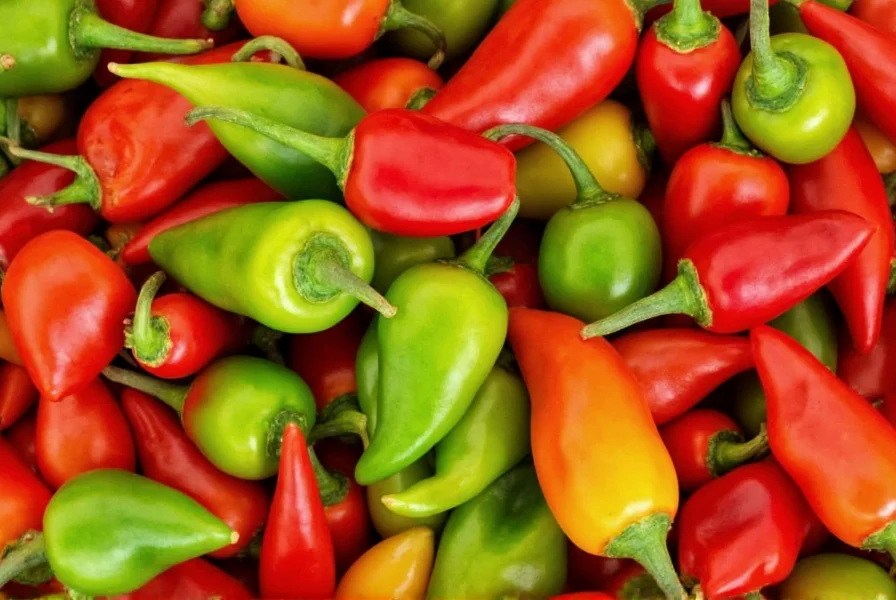Understanding the True Meaning of Chili
When you search for "chili meaning," you're likely encountering confusion about this versatile term that spans botany, cuisine, and regional linguistics. The word "chili" carries multiple definitions depending on context, geography, and culinary tradition. Let's explore the complete picture of what "chili" really means.
Etymology and Historical Origins
The term "chili" traces back to the Nahuatl (Aztec) word "chīlli," which Spanish explorers adopted as "chile" when they encountered these fiery peppers in Mesoamerica during the 16th century. As the peppers spread globally through trade routes, the spelling and pronunciation evolved differently across regions.
Understanding chili pepper meaning requires recognizing its journey from Central America to worldwide cultivation. The scientific classification places most chili varieties under Capsicum annuum, though other species like Capsicum chinense (habaneros) also qualify as chilies.
Regional Spelling Variations Explained
One of the most common points of confusion is the spelling difference:
| Spelling | Primary Region | Context |
|---|---|---|
| Chili | United States (general) | Peppers and dishes |
| Chile | American Southwest | Refers specifically to peppers |
| Chilli | United Kingdom, Australia | Peppers and dishes |
This chili vs chile spelling difference isn't merely academic—it reflects deep cultural connections, particularly in New Mexico where "chile" carries significant cultural identity. The state even designated Capsicum annuum as its official vegetable.

Culinary Contexts: More Than Just Heat
When exploring what does chili mean in cooking, we discover it's not just about heat level. Chilies contribute complex flavor profiles including:
- Smoky notes (particularly in chipotle peppers)
- Fruity undertones (common in habaneros)
- Earthy characteristics (found in ancho peppers)
- Grassy or herbal qualities (typical of fresh jalapeños)
The famous "chili con carne" (meaning "chili with meat" in Spanish) evolved from Mexican carne con chile but transformed significantly in Texas and throughout the American Southwest. Authentic Texas-style chili contains no beans—a point of pride for chili purists that addresses the meaning of chili without beans tradition.
Chili Heat Measurement: Beyond Subjective Experience
Understanding chili pepper meaning requires acknowledging the Scoville Scale, developed in 1912 by pharmacist Wilbur Scoville. This measurement system quantifies capsaicin concentration:
- Bell peppers: 0 Scoville Heat Units (SHU)
- Jalapeños: 2,500-8,000 SHU
- Serranos: 10,000-23,000 SHU
- Habaneros: 100,000-350,000 SHU
- Ghost peppers: 855,000-1,041,427 SHU
- Carolina Reaper: 1,400,000-2,200,000 SHU
This scientific approach to chili heat level meaning helps cooks and consumers understand what to expect from different varieties beyond subjective descriptions like "hot" or "very hot."
Cultural Significance Across Continents
The meaning of "chili" extends far beyond its botanical definition. In many cultures, chilies represent:
- Protection (hung as decorations in some Asian cultures)
- Prosperity (used in business openings in China)
- Medicinal properties (traditional remedies for pain relief)
- Culinary identity (defining regional cuisines from Sichuan to Oaxaca)
When researching chili meaning in different cultures, you'll discover how this small pepper has influenced trade routes, culinary traditions, and even language development worldwide.
Common Misconceptions Clarified
Several misunderstandings persist about chilies:
- Myth: All chilies are extremely hot
Reality: Heat varies dramatically by variety, with some being completely mild - Myth: The seeds contain most of the heat
Reality: Capsaicin concentrates in the white pith surrounding seeds - Myth: Chilies damage your stomach
Reality: They may cause temporary discomfort but don't cause ulcers
Understanding the true meaning of chili peppers requires separating fact from culinary folklore that has developed around these versatile plants.
Practical Applications in Modern Cooking
Knowing the precise chili definition in culinary terms helps home cooks and professional chefs alike. When a recipe calls for "chili," consider:
- Whether it means fresh peppers, dried peppers, or chili powder
- The regional context of the recipe (American vs. Mexican vs. Asian)
- The desired heat level and flavor profile
- Appropriate substitutions when specific varieties aren't available
For example, ancho chilies (dried poblanos) provide deep, raisin-like sweetness, while guajillo chilies offer bright, tangy notes—knowledge essential for authentic chili con carne meaning in traditional cooking.
Conclusion: Embracing the Complexity of Chili
The meaning of "chili" encompasses far more than just a spicy ingredient. It represents centuries of cultural exchange, botanical diversity, and culinary innovation. Whether you're deciphering a recipe, traveling to regions where chilies are cultural icons, or simply trying to understand menu terminology, recognizing the multiple dimensions of chili word meaning enriches your appreciation of this global phenomenon.
What is the difference between chili, chile, and chilli?
The spelling varies regionally: 'chili' is standard in general American English, 'chile' is preferred in the American Southwest (especially New Mexico), and 'chilli' is common in British English. All refer to the same peppers and dishes, with no difference in meaning—only regional spelling preference.
Does 'chili' always mean spicy?
Not necessarily. While many chilies are hot, some varieties like bell peppers and pimentos are technically chilies but contain no capsaicin (the compound that creates heat). The term 'chili' can refer to both hot and mild pepper varieties depending on context.
What does 'chili con carne' literally mean?
'Chili con carne' translates from Spanish as 'chili with meat.' Despite common misconceptions, traditional Texas-style chili con carne contains only meat, chilies, and spices—no beans. The addition of beans represents a regional variation that developed later.
Why are there different spellings for the same word?
The spelling variations reflect historical anglicization of the Nahuatl word 'chīlli' through Spanish ('chile'). American English simplified it to 'chili,' British English added an extra 'l' ('chilli'), and Southwestern U.S. regions retained the Spanish spelling ('chile') to honor cultural heritage, particularly in New Mexico.
Is there a difference between chili peppers and bell peppers?
Both are members of the Capsicum genus, but bell peppers (Capsicum annuum var. grossum) lack capsaicin, the compound that creates heat in chili peppers. Botanically, bell peppers are a specific variety of chili pepper that has been bred for sweetness rather than heat, making them technically mild chilies.











 浙公网安备
33010002000092号
浙公网安备
33010002000092号 浙B2-20120091-4
浙B2-20120091-4